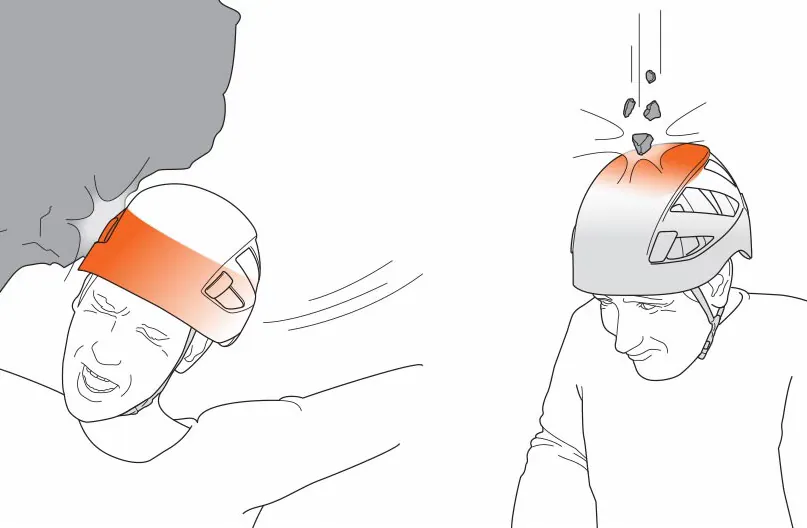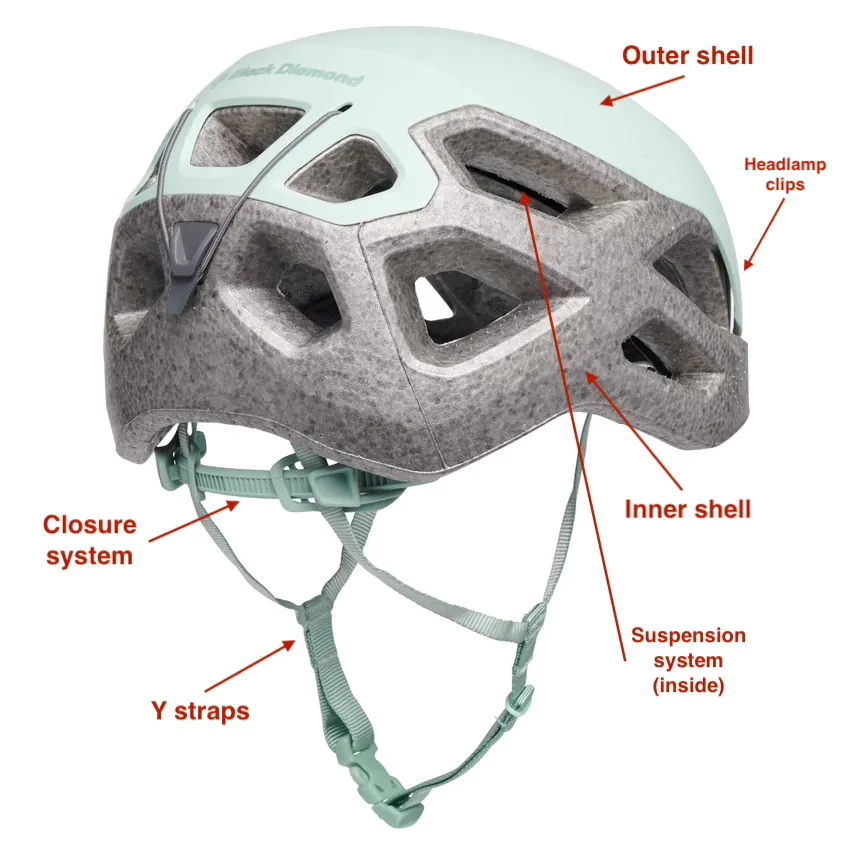Helmet
Protect thy brain, if you have any
The number of climbers that wear helmets today is on the rise, but you can still find individuals who refuse to wear a brain bucket, even though it provides serious protection.
Let's make it simple: unless it's a very safe and horizontal terrain where there is virtually no chance of falling and hitting your head into something hard - wear the darn helmet!

Helmet anatomy
- Outer shell is the first line of defense against impacts and abrasion. This ‘shell’ forms the entire outer shape of the helmet.
- Inner shell (the foam liner) adds shock absorption.
- Straps, closure and suspension is a system of straps and buckles which allow attaching the helmet comfortably to your head.
- Clips are very useful for secure attachment of a headlamp.
Helmets have Hard, Foam or Hybrid outer shells, hard being the toughest and heaviest, foam - lighter, better ventilated, but less durable, and hybrid ones - lightest, airiest, but most fragile and expensive.

Tips on choosing a helmet
Choose a helmet by fit and function. You will wear a helmet for a long time, so it has to fit comfortably. Try a selection - most companies offer different sizes and have different fitting methods. Keep an open mind and choose the most comfortable one.
Helmet choice also depends on your activity. If you’re only rock climbing, look for something light with a lot of ventilation holes. For winter, you might want something that will take more abuse and is less ventilated. If you're doing both - choose something in the middle.
Contrary to popular belief, helmet's colour won't give you any special powers, but being more visible in snow is always a bonus.
